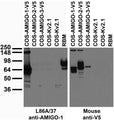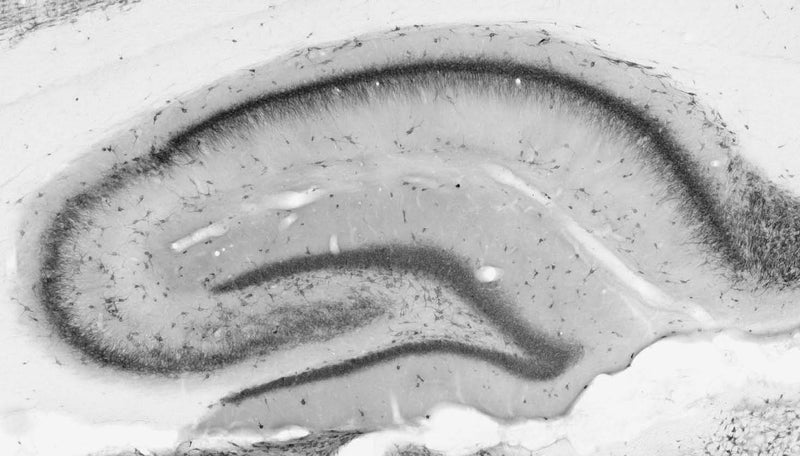Ships: 1-2 business days
Product Specific References for Applications and Species
| Immunocytochemistry: Mouse | ||
| PMID | Dilution | Publication |
| 32708917 | 1:500 | Dulla, C.G., et al. 2020. Regulation of neurogenesis in mouse brain by HMGB1.. Cells, 1714. |
| Immunohistochemistry: Mouse | ||
| PMID | Dilution | Publication |
| 29403353 | not listed | Bishop, H.I., et al. 2018. Kv2 Ion Channels Determine the Expression and Localization of the Associated AMIGO-1 Cell Adhesion Molecule in Adult Brain Neurons. Frontiers in Molecular Science, 1. |
| 24962901 | not listed | Mandikian, D., et al. 2014. Cell type-specific spatial and functional coupling between mammalian brain Kv2.1 K+ channels and ryanodine receptors.. Journal of Comparative Neurology, 3555-3574. |
| Immunohistochemistry: Rat | ||
| PMID | Dilution | Publication |
| 37758930 | not listed | Mitchell, K.G., et al. 2023. High-volume hybridoma sequencing on the NeuroMabSeq platform enables efficient generation of recombinant monoclonal antibodies and scFvs for neuroscience research. Scientific Reports, 16200. |
| Western Blot: Human | ||
| PMID | Dilution | Publication |
| 34137443 | 1:1000 | Maverick, E.E., et al. 2021. Kv2 channel-AMIGO β-subunit assembly modulates both channel function and cell adhesion molecule surface trafficking. Journal of Cell Science, jcs256339. |
| Western Blot: Mouse | ||
| PMID | Dilution | Publication |
| 38590146 | 1:5 (supe) | Raja, R, et al. 2024. Insertion of a neomycin selection cassette in the Amigo1 locus alters gene expression in the olfactory epithelium leading to region-specific defects in olfactory receptor neuron development. Genesis, e23594. |
| 32708917 | 1:1000 | Dulla, C.G., et al. 2020. Regulation of neurogenesis in mouse brain by HMGB1.. Cells, 1714. |





